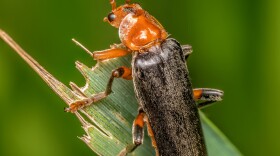When venturing out and about to observe our amazing diversity of insect life, there’s always a chance of encountering something that can defend itself.
You get stung. Ouch, that really hurts! But in comparison to the sting of other insects, how much does it really hurt?
For that we turn to the work of the late Dr. Justine Schmidt, otherwise known as the “King of Sting.”
An entomologist at the University of Arizona, over the years Dr. Schmidt’s research, including research on insect venom, resulted in over 185 publications, 20 book chapters, two books, and hundreds of presentations.
But what he became best known for was the creation of The Schmidt Sting Pain Index – rating the stings of bees, wasps, and ants. In order to create such an index, and rank the stings of specific species, over the years he subjected himself to many painful encounters.
In an interview conducted by Arizona Public Media, Dr. Schmidt described the index’s four levels.
Level 1 – a very minor sting that hurts a little bit, like that of a fire ant.
Level 2 – a sting that is “darn painful”, like that of a yellow jacket or honeybee.
Level 3 – a throbbing pain that hurts much more and can last up to 8 hours, like that of a Harvester Ant.
And finally, Level 4 – “You don’t want to go there! A paralyzing pain where you can’t function. Ten times worse than a 3. Like 100 honeybees all at once.” Something like the sting from a Tarantula Hawk.
So there you have it. The next time you are unfortunately stung, you can now yell with confidence, “Ow, that hurts like a 2!”





